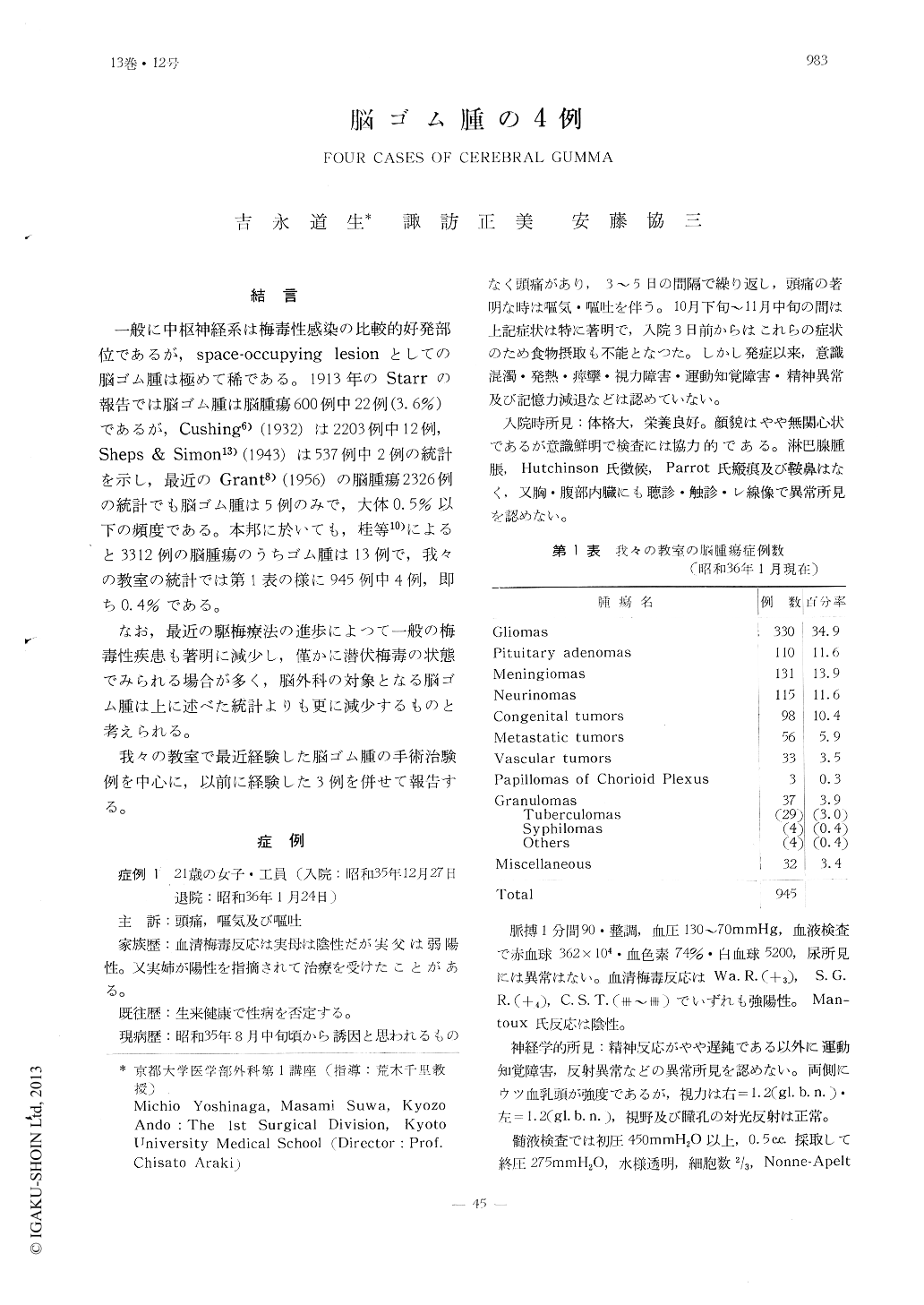Japanese
English
- 有料閲覧
- Abstract 文献概要
- 1ページ目 Look Inside
結言
一般に中枢神経系は梅毒性感染の比較的好発部位であるが,space-occupying lesionとしての脳ゴム腫は極めて稀である。1913年のStarrの報告では脳ゴム腫は脳腫瘍600例中22例(3.6%)であるが,Cushing6)(1932)は2203例中12例,Sheps&Simon13)(1943)は537例中2例の統計を示し,最近のGrant8)(1956)の脳腫瘍2326例の統計でも脳ゴム腫は5例のみで,大体0.5%以下の頻度である。本邦に於いても,桂等10)によると3312例の脳腫瘍のうちゴム腫は13例で,我々の教室の統計では第1表の様に945例中4例,即ち0.4%である。
なお,最近の駆梅療法の進歩によつて一般の梅毒性疾患も著明に減少し,僅かに潜伏梅毒の状態でみられる場合が多く,脳外科の対象となる脳ゴム腫は上に述べた統計よりも更に減少するものと考えられる。
Four cases of solitary cerebral gumma treated surgically, were reported. The cere-bral gumma is very rare ( in our clinic, only 4 of 945 cases of all braintumors) and its symptoms are not specific ; and so it is very difficult to differentiate them from other brain tumors with certainty.
We should keep in our mind the possibility of cerebral gumma, if a patient with positive Wassemann's reaction in the blood and or the cerebrospinal fluid is suspected to have tumor of the brain.
Surgical removal is the treatment of choice, for it is resistant to antiluetic medical treat-ment.

Copyright © 1961, Igaku-Shoin Ltd. All rights reserved.


